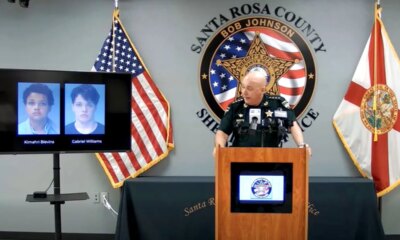Nasa said on Saturday that it would use a spacecraft from billionaire Elon Musk’s SpaceX rather than Boeing to bring home two astronauts stuck at the International Space Station.
Astronauts Sunita Williams and Barry Wilmore, who were supposed to return to Earth two months ago, will now come back in February aboard a SpaceX Crew Dragon rather than the Boeing CST-100 Starliner they travelled to the space station with that subsequently suffered technical difficulties.
“Space flight is risky,” said Nasa administrator Bill Nelson. “A test flight, by nature, is neither safe nor routine, and so the decision to keep Butch and Suni aboard the International Space Station and bring the Boeing Starliner home uncrewed is the result of a commitment to safety.”
Nasa and Boeing engineers are now reconfiguring the Starliner in order for it to return to Earth in September without a crew. While Nasa officials said they still expected to use the spacecraft on crewed missions, it is another blow to the reputation of a company that has been heavily scrutinised in recent years for engineering and manufacturing failures.
Mark Nappi, the manager at Boeing overseeing Starliner, said in a message to employees on Saturday that he knew this was “not the decision we had hoped for, but we stand ready to carry out the action’s necessary to support Nasa’s decision. The focus remains first and foremost on ensuring the safety of the crew and spacecraft.”
Boeing said it was continuing to focus “on the safety of the crew and spacecraft . . . and we are preparing the spacecraft for a safe and successful uncrewed return”.
Boeing and SpaceX are part of Nasa’s commercial crew programme, which was developed to encourage private sector suppliers to compete to ferry astronauts to the space station. SpaceX launched its first successful crewed mission in 2020.
When Williams and Wilmore blasted off aboard the Starliner on June 5, the capsule already was billions of dollars over budget and had experienced delays on earlier planned launches.
The mission to test the capabilities of the new spacecraft was scheduled to last eight days. But helium leaked from the spacecraft, and five of its thrusters functioned improperly, causing engineers and scientists at Nasa and Boeing to run tests to determine whether Starliner was the safest option to shuttle the astronauts back to Earth.
There was ultimately “too much uncertainty” around thrusters potentially failing during a tight piloting sequence, said Steve Stich, manager for Nasa’s commercial crew programme.
“It was just too much risk,” he said.
The decision was made in the context of past disasters, Nelson said. The explosions of the Challenger and Columbia space shuttles killed a total of 14 astronauts, partly because the agency’s climate prevented engineers from raising “obvious mistakes” with top officials.
Boeing and Nasa viewed the uncertainty of the data differently, said Nasa associate administrator Jim Free. Fellow Nasa colleague Ken Bowersox said there were “tense discussions because the call was close”, adding that the agency was “committed to continuing to work with Boeing”.







































